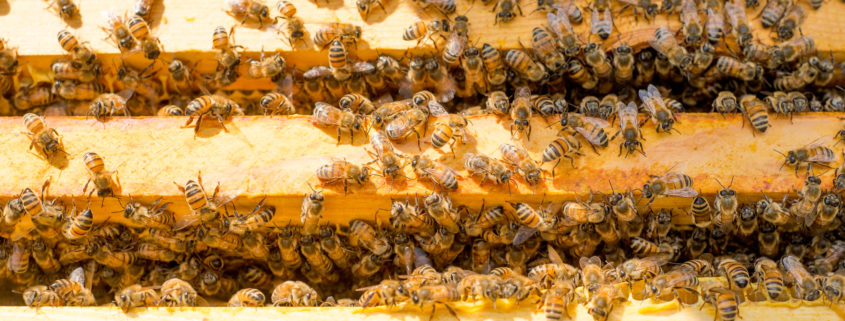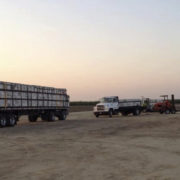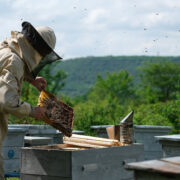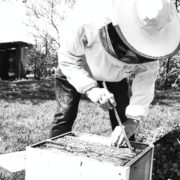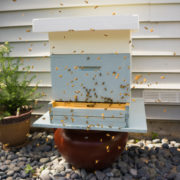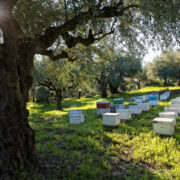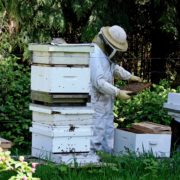Frame Strength For Almond Pollination
When it comes to readying for almond pollination, the most important considerations for beekeepers and growers alike are the number of honeybee colonies available to be delivered, and their frame strength. Frame strength is what determines the payday for beekeepers, and it is measured exactly as it sounds. It is the number of frames inside the hive that are covered with bees. Most almond growers demand an average of at least eight frames of bees, although some will accept six, and some will even accept four frames, but will of course pay significantly less for these weaker colonies.
It is not easy for a commercial beekeeper – or any beekeeper for that matter – to be able to produce such strong colonies during what is still considered the latter part of winter in the northern hemisphere. In order to deliver an eight-frame average bee colony in early February, a beekeeper needs to begin preparing his or her colonies well in advance. In fact, preparations for almond pollination typically begin many months earlier. The key to having strong and healthy colonies coming out of the winter is by having strong and healthy colonies going into the winter. If a colony heads into winter at below average strength, then there is no possible way that it will emerge out of winter with eight frames of bees.
As the old adage goes, “it costs money to make money”, and the time to invest in your colonies begins at the end of summer. Usually starting around late August, California commercial beekeepers begin aggressively attending to their colonies – much more than normal, both with syrup and pollen substitutes, and, if necessary, medications. It is at this time that many commercial beekeepers requeen their under-performing colonies with late summer or early fall queens. The ideal queens for this kind of situation are queens like those from Wildflower Meadows, which are known for their robust brood production and early season buildup.
The point of this vigorous late season activity is to stimulate brood production throughout the late summer and early fall so that plenty of healthy and well-nourished brood hatches right at the onset of winter. These will be the eight frames of bees that emerge from winter and, hopefully – if all goes according to plan – deliver a nice payday for the beekeeper come February. Having a population of very young bees at the start of winter, means that there will be less mortality during the short, but relatively cold California winter.

